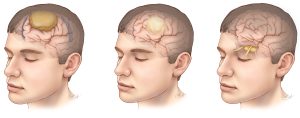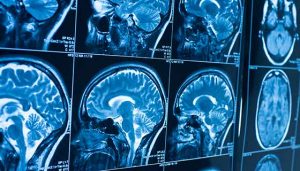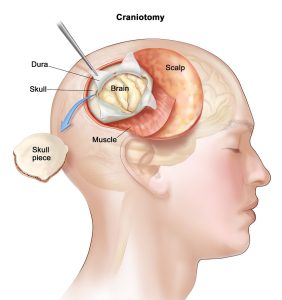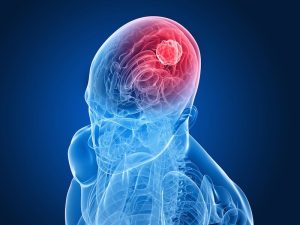
BRAIN TUMOR
Brain tumor. An abnormal growth of cells in the brain, known as a brain tumors, can be either benign or carcinomaous. Depending on their size and location, they might produce a range of symptoms. Surgery, radiation, and chemotherapy are among the available treatments. A mass of aberrant cells called a brain tumor can form in the brain’s tissue or in adjacent organs like the pituitary gland, nerves, or the membranes that surround the brain.
BRAIN TUMOR
Primary brain tumors start in the brain, whereas secondary brain tumors spread from another region of the body. They may be malignant, or cancerous, or benign, or noncancerous. The brain is where brain tumors can start. We refer to these as primary brain tumors. Cancer can occasionally move from other regions of the body to the brain. These tumors are referred to as metastatic brain tumors or secondary brain tumors.
Types

Gliomas are primary brain tumors that start in the glial cells that surround and shield the brain’s nerve cells. Meningiomas are tumors that grow in the membranes that envelop the brain and spinal cord, known as meningiomas. Cancers that develop in the pituitary gland, a little gland located near the base of the brain, are known as pituitary tumors. Neurofibromas are tumors that grow in the tissue of the nerves. Ependymomas are tumors that start in the cells that line the spinal canal and ventricles of the brain. Metastatic secondary brain tumors: Cancer cells from other body areas, such as the kidneys, breast, or lungs, can travel to the brain and develop into tumors.
Symptoms

Headaches: Frequently the initial sign, particularly if the tumor is expanding and pressing against the brain. If the tumor irritates or destroys brain tissue, seizures may result. Vision or Hearing Changes: If the tumor puts pressure on the auditory pathways or optic nerve. If the tumor impacts the brain’s motor regions, one side of the body may experience weakness or numbness. Coordination or balance issues may arise if the tumor impacts the cerebellum, which is the area of the brain in charge of coordination. Alterations in Behavior or Personality: If the tumor impacts the frontal lobes, which are in charge of higher-level processes. Confusion or Memory Loss: If the tumor impacts the temporal lobes, which are in charge of language and memory. Vomiting or nausea: If the tumor raises the pressure inside the skull.
Diagnosis

Neurological Examination: The patient’s reflexes, coordination, and other neurological functions will be evaluated by the physician. Imaging of the Brain: Magnetic Resonance Imaging, or MRI, can identify malignancies and provide fine-grained images of the brain. Computed Tomography Scan (CT Scan): Produces cross-sectional pictures of the brain using X-rays.
Biopsy
A tiny sample of the tumor tissue may occasionally be removed for examination. Brain tumor treatment: Surgery: To get rid of the tumor or make it smaller. Radiation therapy: Using high-energy radiation to destroy tumor cells. Chemotherapy: Using medications to destroy cancer cells. Using medications that target particular chemicals in cancer cells is known as targeted therapy.
Causes

Primary brain tumors are those that begin as an expansion of brain cells. They may begin in the surrounding tissue or directly in the brain. The meninges, which are membranes covering the brain, may be nearby tissue. Additionally, brain tumors can develop in the pituitary, pineal, and nerve systems. When DNA alterations occur in brain or nearby cells, brain tumors result. The instructions that inform a cell what to do are encoded in its DNA. When healthy cells would naturally perish as part of their life cycle, the alterations instruct the cells to proliferate rapidly and survive. The brain produces a large number of additional cells as a result. A development known as a tumor may develop from the cells.
Summary
Brain cancers cannot be prevented. You did nothing to induce a brain tumor to develop. Individuals who are at a higher risk of developing a brain tumor may want to think about getting screened. Screening does not prevent brain tumors. However, when a brain tumor is tiny and has a higher chance of success with therapy, screening may help detect it.